
Marissa Land proving that meat wraps aren’t just for dudes.
When people come to Squamish for summer bouldering (and many, many people do), they often get bouted by climbs that, numerically speaking, are well within their abilities. I experienced it, and I think most people have the same feeling to some extent or another. People blame poor feet, cryptic granite, painful crystals, and humid conditions, but the real story here is that the climbing in Squamish is Yosemite-style technical, and quite varied; it requires a break-in period of several sessions.
I am no expert in the Squamish scene by any means, but I have made an effort to sample everything from roofs to slabs, compression to crimps, and I have noticed many facets that are unique to Squamish. If you’re planning on coming to Squamish, I hope this list helps you hit the forest floor running. Er, hit the floor sending?
The Squamish Shuffle
It’s no secret that the magical forest has a lot of lip traverses. Unlike Bishop granite, which forms eggs, or Hueco granite, which forms topout jugs, the boulders here tend to be angular and blocky. Baba Hari Dass, ATD, Ramen Raw, Lipsmack, Any Rock Will Do…these are classic slopey heel-hook fests that will send that little mono-campusing gym rat back to Gibbs’ Cave with the quickness.
The key is being able to shift your heel hook, and there are seldom face holds for you to stand on. Instead, try toe-hooking behind your heel, and then bringing the heel closer to your hands. If it’s your left heel ye be wantin’ to shift, put the outside of your right foot against the rail and pull the toes of that foot back towards your face. Bring your left heel closer. Success! Oh wait, you remembered to brush the crux sloper, right?
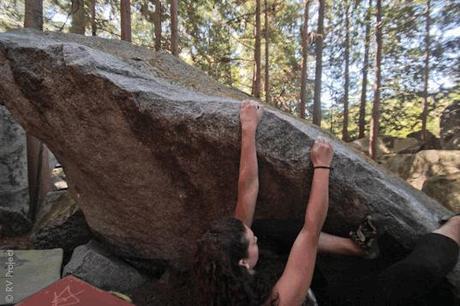
Sara Roudebush demonstrating excellent shufflin’ technique
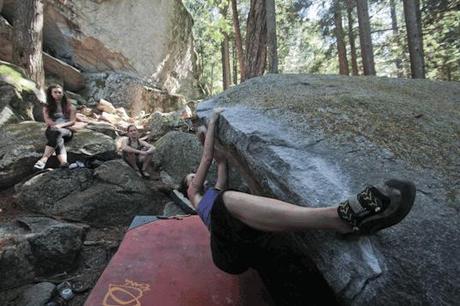
Jen shows how to integrate the shuffle while running laps on Any Rock Will Do
Squamish Knee
There are more heel-hooks here than anywhere I can remember, and it is common for a climb to require multiple hard heel hooks on the same leg. Prolonged sessions on problems like this will eventually take its toll, and you may feel a strange ache in the back of your knees. To combat this, stretch your hammies, hike the Chief to work your opposing muscles, and consider having a trad day where you destroy your calves instead.

Viet hooking contortion-style while nearly sending the classic Golden Boy
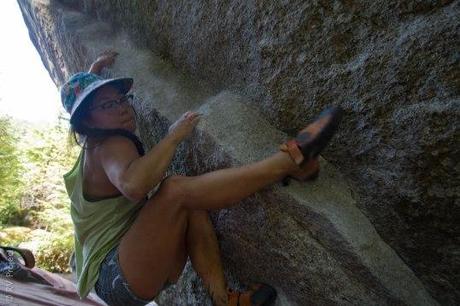
Courtney Miyamoto hooking hard while working Sit Down to Holm Boy
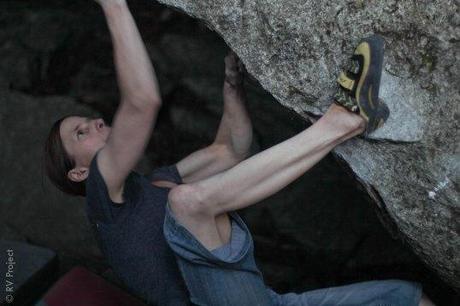
Michelle Peot demonstrates that heel hooks are better than heels for showing off calves. Attempting Worm World Low.
Squam Palm
The gritty, crystalline nature of the rock makes for great friction when conditions are right, but holds can be pretty abrasive. This fact isn’t unique to Squamish, but the prevalence of meat-wraps, false-grips, mantels, and other handhold shenanigans that don’t involve simple grabbing means that you can end up with a palm that looks like hamburger. The only advice I have here is to plan to stay long enough to let your skin toughen up. Or glue sandpaper to your floor and start walking in a handstand position.
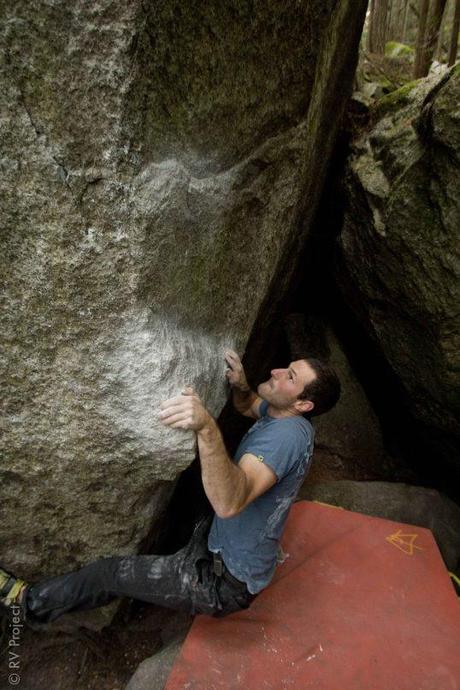
Ian Cotter-Brown caps the wrap with what some call a “false grip.” Hey, he sent. American Gigolo.
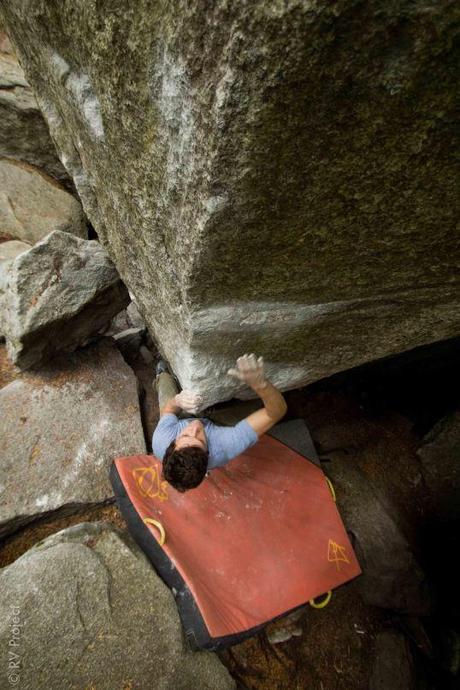
Les shows us how to really wrap meat. Tug on that palm, buddy!
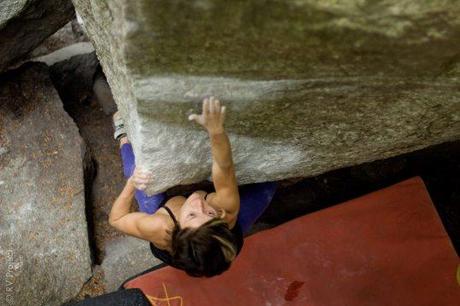
Vikki makes it look good, doesn’t she?
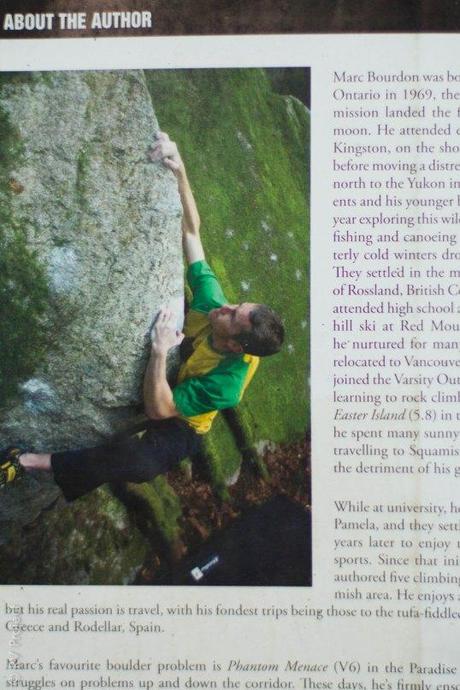
Yes, even the author of the guidebook knows a thing or two about how to grab the apex of a boulder.
The Granite Piano
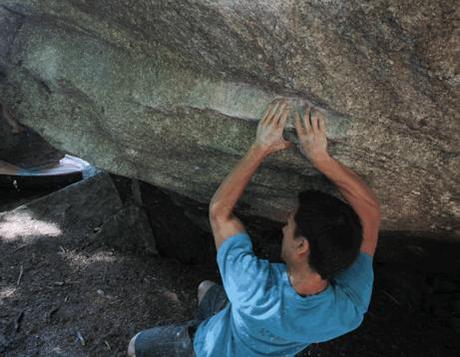
Sean McColl playing sweet quartz notes on the starting hold of Mindbender Low.
These aren’t southern slopers, with fine-grained, uniform texture. These babies are very 3-dimensional, and oftentimes the difference between send beers and sad beers is finding the exact right combination of crystals and pits to put your fingers on. This can only be achieved through careful and deliberate placement of each digit. The adjustment process makes the climber appear as if he or she were trying to “read” the rock through some form of Braille. Note: this is similar to parallel parking in San Francisco, which often requires “feeling out” where the cars in front and behind you are.
Air Conditioning
The high season here is summer, but it can often be a little too warm and/or humid. Thankfully, the talus upon which most of the boulders sit is still hollow underneath (underneath the moss and trees, I mean), and provides a direct link to a massive repository of cold air. If you know where to go, you can find boulder problems that constantly emit a cold draft.
Tim Did It
So you want to cement your place in the history books with a bold new ascent of a blank-looking piece of stone. How do you know it hasn’t been climbed before? It’s a) got crimps so small nobody would’ve thought to use them b) a totally blank overhanging compression block c) got a bunch of moss and ferns growing on it d) an eliminate/link-up so dumb/heinous that nobody would’ve bothered. Well, think again. Tim Doyle, a totally unsung local, probably did it. He’s like the James Litz of Squamish, quietly and easily putting up hard boulder problems that most people have never heard of. If not then Tim Clifford, first ascentionist of one of Squamish’s hardest, The Singularity, probably did it. The Tims go on the list of absolute crushers whom most of the climbing world hasn’t heard of.

See the hard ones? Tim did ‘em.
